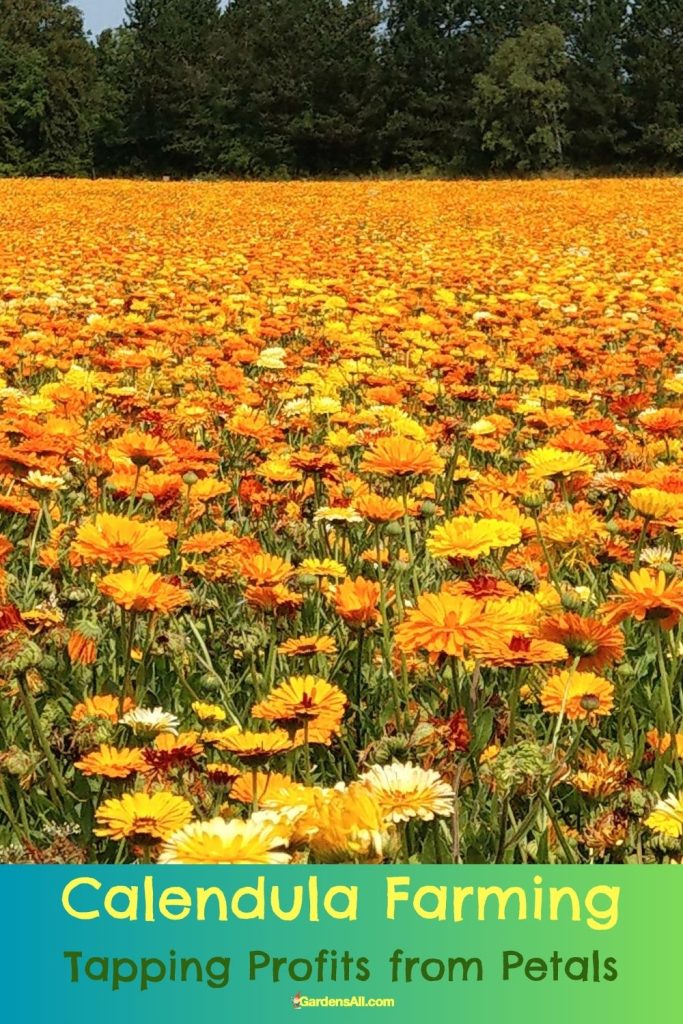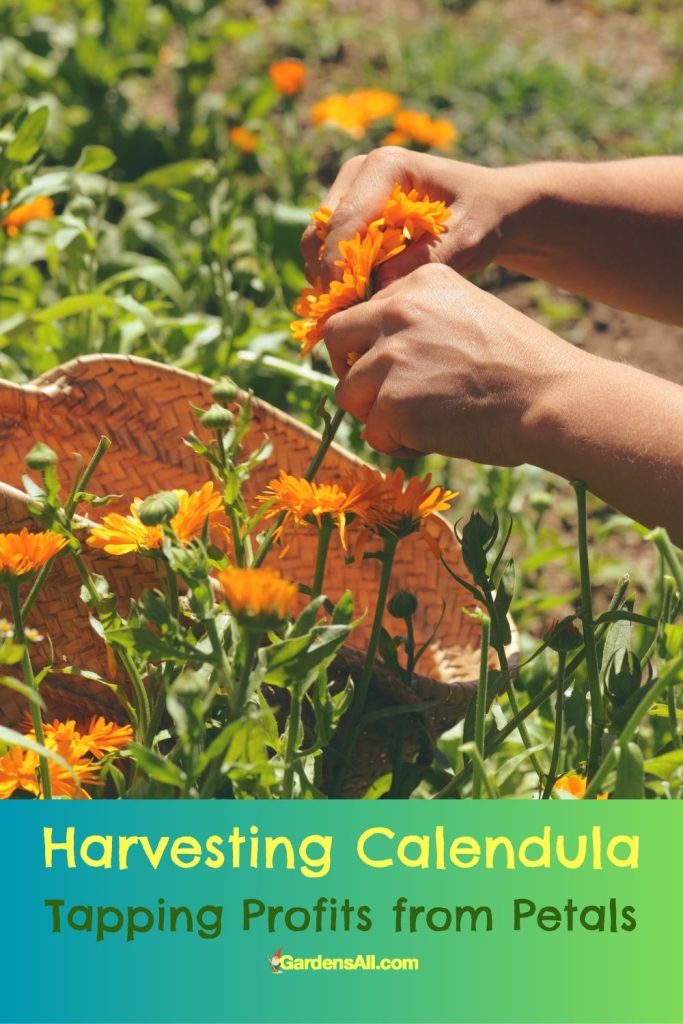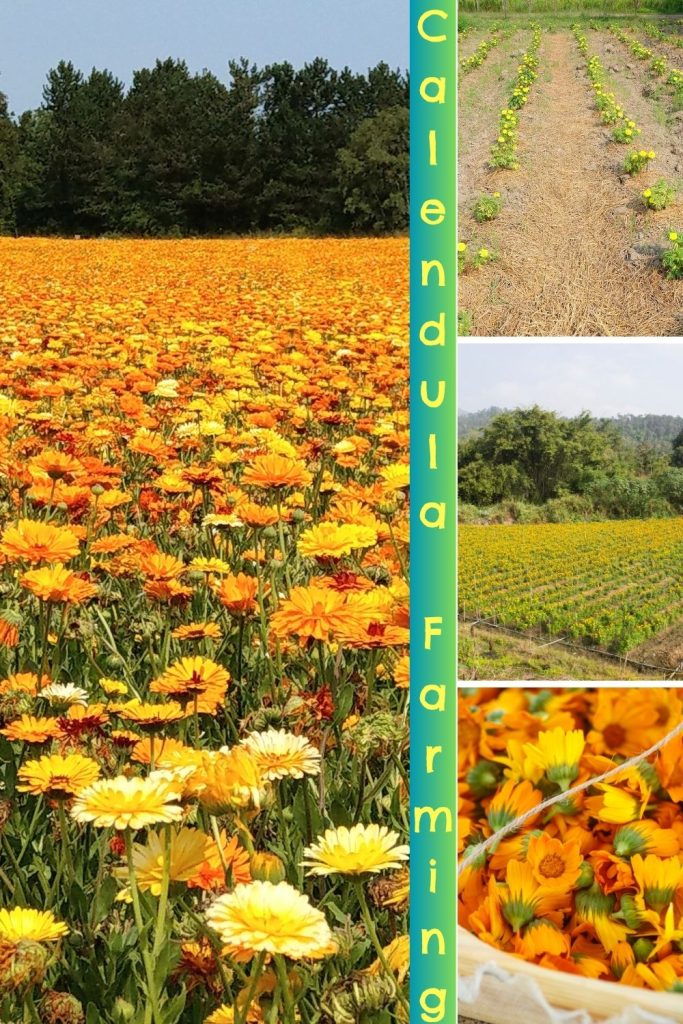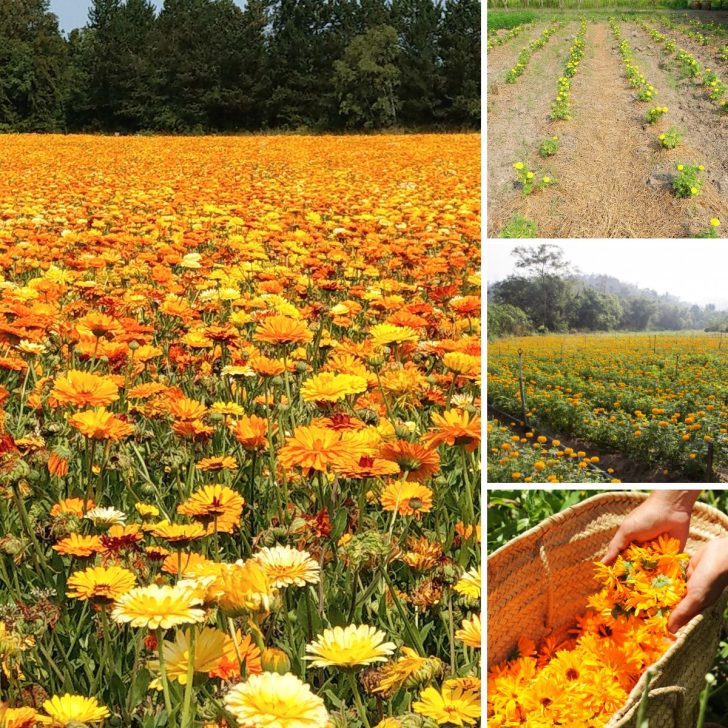Growing Opportunities for Farmers and Market Gardeners
For farmers and market gardeners interested in diversifying their crop portfolios, calendula farming represents a potentially lucrative opportunity. This article offers an overview into the calendula market, potential profits, and best practices for calendula cultivation.
Calendula, often known as pot marigold, is a vibrant flower with a variety of uses, ranging from culinary to medicinal, and from selling the seeds, plants, fresh and dried flowers. The bright orange and yellow flowers of pot marigold not only offer visual delight but also hold potential for substantial profit.
Understanding the Calendula Market
Calendula flowers have been utilized for centuries in many cultures due to their wide-ranging benefits. Today, their use is prevalent in industries like cosmetics, pharmaceuticals, textiles, food and beverage, and even dye manufacturing.
The demand for natural and organic products has been escalating, driving the growth of the calendula market. In particular, the skincare industry desire for natural ingredients has catapulted calendula to star status.
North America and Europe are the current leading markets, but the Asia Pacific region is catching up. Driven by rising consumer awareness on the benefits of organic and natural products, considerable growth is anticipated for calendula sales.
According to a report by Future Market Insights, the global calendula market is expected to grow at a rate of 5.5% from 2022 to 2030.
REFERENCE: DataIntelo.com[1]https://dataintelo.com/report/global-calendula-oil-market/
Profit Potential for Farmers
When it comes to profitability, calendula is a promising crop. One of the primary reasons is its quick turnaround time. Calendula can bloom just 60 days after planting and continue to bloom until frost, providing a continuous supply for harvest.
Even better, there are a number of product possibilities for calendula flowers, plus it can be dried to preserve for future sale and uses. Depending on the market and quality, dried calendula petals are currently priced at around $15 to $30 per pound. Fresh flowers, which are typically sold by stem or bouquet in farmers’ markets, can also be profitable and especially well suited to market gardeners.
Calendula Cultivation: Best Practices
Calendula is a hardy plant that can grow in a variety of soil types, though it prefers well-drained soil with good sun exposure. The seeds can be direct-seeded or started indoors and transplanted.
As calendula is a prolific bloomer, regular harvest of mature flowers encourages more blooming. So the more you harvest, the more production you get, which is perfect!
For best quality of beneficial properties, harvest flowers when they’re fully. It’s also important to ensure that flowers are dried properly to prevent mold, which can ruin your entire harvest.
Pest and disease control is generally easy with calendula. However, they can attract aphids, so regular inspection and organic pest control methods should be implemented.

Marketing Your Calendula Crop
Success in the calendula market involves not just growing the flowers, but also marketing them effectively. Here are a few marketing tips:
- Diversify Your Products: Don’t just sell the flowers. Consider selling seeds, plants, and value-added products like calendula salves, oils, and tea.
- Educate Your Customers: Many people aren’t familiar with calendula’s uses and benefits. Use your platform to educate them.
- Connect with Local Businesses: Approach local restaurants, herbalists, skincare product makers, and health food stores. They might be interested in buying your flowers.
- Online Sales: Don’t forget about the power of the internet. Selling dried flowers and seeds online can expand your market reach.
- Farmers’ Markets: These are excellent places to sell fresh flowers, plants, and handmade calendula products.
Calendula is a versatile plant that can thrive in a wide range of climates, but it particularly flourishes in USDA Hardiness Zones 2-11. This hardy annual plant can be grown across most of the United States, from the cool northern regions to the hot southern areas. Calendula can tolerate mild frost and actually prefers cooler weather, making it an excellent choice for early spring and fall plantings in warmer zones.
For best results, calendula should be grown in full sun or part shade with well-drained soil. It will flower more profusely in full sun, but in warmer southern climates, some afternoon shade can help protect the plants from intense heat.

What States Are Best for Calendula Farming?
This hardy annual plant can be grown across most of the United States, from the cool northern regions to the hot southern areas. Calendula can tolerate mild frost and actually prefers cooler weather, making it an excellent choice for early spring and fall plantings in warmer zones. But here are some examples:
- Pacific Northwest (Oregon, Washington, and Northern California): Calendula does well in these cooler climates, with their mild summers and moist, temperate conditions.
- Midwest (Ohio, Illinois, Indiana, Michigan): With their fertile soils and cooler spring and fall temperatures, the Midwest can be ideal for calendula.
- Northeast (New York, Vermont, New Hampshire, Maine): Despite the harsh winters, calendula can be successfully grown in the spring, summer, and fall.
- Mountain States (Colorado, Utah, Wyoming): Calendula can do well in these areas due to cooler summer temperatures, especially in locations with good sun exposure.
- Southern States (Texas, Florida, Georgia): In the South, calendula can be planted in the fall for a winter or early spring harvest, as the plants can tolerate light frosts and mild winters.
- California: California’s diverse climate makes it a great state for calendula farming. In Northern California, calendula can be planted in spring and fall, while in Southern California, a fall planting can lead to winter blooms.
Commercial Harvesting of Farm-Grown Calendula
Harvesting calendula on a commercial scale requires a careful balance between timing, handling, and preserving the quality of the flowers. Here are the steps commercial growers typically follow when harvesting calendula:
- Timing: Calendula flowers should be harvested when they are fully open and in peak condition. This is usually in the morning after the dew has dried but before the heat of the day. The flowers open up fully during sunny days and close during the night or on cloudy days. This is important to note as it influences the best time for harvesting.
- Picking: Unlike some crops that can be harvested all at once, calendula requires continual harvesting throughout the season as new flowers bloom. The flower heads are usually handpicked because this method causes the least damage to the plants and flowers.
- Tools: Clean, sharp shears or scissors are the best tools for harvesting calendula. Gloves can also be worn to protect the hands, especially since calendula can sometimes cause skin irritation.
- Handling: The cut flowers should be handled gently to prevent bruising. They should be placed in a clean, dry container. It’s essential not to overload the container to avoid crushing the flowers at the bottom.
- Post-Harvest: After harvest, the flowers should be processed as soon as possible. If they aren’t used fresh, they’re typically dried for later use. To dry calendula flowers, they’re spread out in a single layer in a well-ventilated, dark place until completely dry. This can take a few days to a week, depending on the humidity level.
- Regular Harvesting: Regular harvesting encourages the plants to produce more flowers. By continually harvesting, commercial growers can extend the calendula blooming season, sometimes until frost.
- Quality Control: Only flowers in good condition should be harvested. Any flowers that are past their prime or show signs of disease or insect damage should be discarded.
It’s worth noting that mechanized harvesting isn’t typically used for calendula on a commercial scale. This is because calendula requires a delicate touch to prevent damaging the flowers, and because the plants don’t all bloom at the same time. While this means more labor, it also results in a higher-quality end product.

Pros and Cons of a Calendula Farm
Like any crop, growing calendula commercially comes with its own set of advantages and challenges. Here are some of the pros and cons to consider:
Pros of Growing Calendula Commercially:
- Versatility: Calendula has a variety of uses, including medicinal, culinary, cosmetic, and ornamental, creating a diverse potential market.
- High Demand: The rising demand for natural and organic products has increased the market for calendula, particularly in the skincare and natural health industries.
- Easy to Grow: Calendula is a hardy plant that can adapt to different soil types and climate conditions, making it a relatively low-maintenance crop.
- Quick Turnaround: Calendula flowers can bloom just 60 days after planting and can continue to bloom until frost, providing a continuous supply.
- Extended Harvest Season: Regular harvesting encourages more blooming, often extending the season until frost.
- Potential for Value-Added Products: Beyond selling fresh or dried flowers, there are opportunities to create and sell value-added products such as oils, teas, salves, and seeds, increasing profit margins.
Cons of Growing Calendula Commercially:
- Labor-Intensive Harvesting: Calendula flowers need to be harvested by hand, which can be labor-intensive, especially on a commercial scale.
NOTE: Flowers need to be hand harvested; seeds may be combine harvested.[2]http://www.omafra.gov.on.ca/CropOp/en/indus_misc/oil_crops/calen.html - Pest Attraction: While calendula is generally resistant to many pests, it can attract aphids, which can be a problem if not managed effectively.
- Sensitivity to Heat: In areas with high summer heat, calendula plants may stop blooming or may require additional care to thrive.
- Market Knowledge: Farmers need a good understanding of their potential market and the best ways to sell their calendula products. This may require research and connections in industries that use calendula.
- Quality Preservation: Drying calendula flowers, a common method of preservation, needs to be done correctly to avoid mold and ensure the best quality.
- Competition: As the demand for calendula rises, so may the competition. Farmers need to differentiate their products to succeed in a competitive market.
Despite the challenges, with good farming practices and a solid marketing plan, calendula can be a profitable crop for commercial growers. As with any farming venture, it’s essential to do thorough research and planning before getting started.

Love the Journey
The key to successful farming lies in careful research and planning on all aspects of the business and the market supporting it.
Don’t be daunted, just start by dedication to ongoing research. Learn to love the journey.
If you don’t enjoy immersing in the topic then it may not be the crop for you. You’re going to be spending years building a business and life around it, and the best way to decide if that’s for you, is to first immerse in learning all that you can about it.
Check with your local agricultural extension service for tips and information. They may also be able to inform you of area farms doing something similar, plus you can start talking with market gardeners at your local farmers markets.
Most of the time these folks all glad to help and share what they know. We find that invariably, these conversations leave you with more than you knew before as well as additional leads and ideas to follow up on.
You may also be interested in this article on growing blackberries for profit.
In Conclusion
The calendula market offers a promising opportunity for farmers and market gardeners. Its diverse applications and rising demand make it a viable and profitable crop. With proper cultivation and marketing strategies, you can turn this golden flower into a golden opportunity.
I’m LeAura Alderson, a garden, herb and plant enthusiast with a passion for discovering the many edible and medicinal benefits of the plants all around us, including the weeds! I’m a writer, editor and media publisher for our family of websites.
While I was certified in fitness and life coaching, I am NOT a health practitioner. However, I’m a lifelong health enthusiast, with a keen interest in healthy, organic foods and making home remedies and the content we share is from our own experience and usage as well as that extracted from scientific research so that you can explore further on your own.
Always seek the advice and guidance of your health practitioners first and foremost.
As a family we’re steadily expanding our gardening, experimentation and knowledge around all things gardening, edible landscaping, fresh organic foods and self sustainability with farming in our future. I also own and manage iCreateDaily.com, a site all about transformation through creation, and the power of positivity, optimism and mindset.
References

